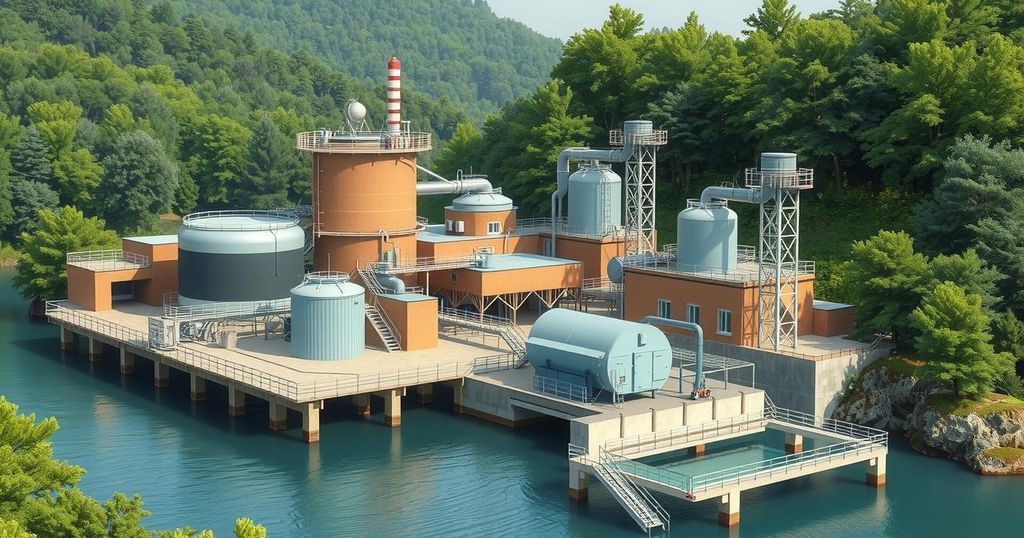The city of Anacortes, WA is rebuilding its water treatment plant to better withstand floods and climate change. The project, costing approximately $56 million, includes measures to elevate electrical equipment and enhance flood protection. Collaborating with EPA resources, Anacortes aims to ensure plant resilience against future climate risks, as similar efforts are also being undertaken in other communities.
The city of Anacortes, Washington, recognized the vulnerability of its water treatment plant to flooding and climate change. Serving 56,000 residents, the plant, located along the Skagit River, required an upgrade from its original capacity of 21.4 million gallons per day (mgd) to 31.5 mgd. In 2008, moving the facility out of the floodplain was deemed cost prohibitive, prompting officials to rebuild on the existing site while ensuring future climate risks were accounted for.
Officials collaborated with non-profit organizations to evaluate climate science and assess risks related to the plant’s location. Key climate threats included more frequent severe storms, saltwater intrusion, and increased sedimentation levels. Projections through the 2080s indicated an extended 100-year floodplain and a 350% increase in winter sediment loads, along with expected upstream migration of the saltwater wedge due to rising sea levels.
In addressing flooding risk during the plant’s design and construction, the city implemented several strategies: minimizing penetrations below the current 100-year flood elevation, elevating critical electrical equipment above flood levels, employing waterproofing techniques, and building protective ring dikes. The total cost for rebuilding the facility is projected to be $56 million, aimed at preparing the plant to accommodate increased demand and climate variability.
To aid in this project, the U.S. Environmental Protection Agency (EPA) provided tools and resources. The Coastal Inundation Toolkit assists utilities in understanding vulnerabilities linked to sea level rise, while the Creating Resilient Water Utilities Adaptation Strategies Guide offers low-cost adaptation strategies. Additionally, the Climate Resilience Evaluation and Awareness Tool (CREAT) facilitates vulnerability assessments and identifies research gaps.
Other communities facing similar challenges include Manchester-by-the-Sea, Massachusetts, which assessed climate vulnerability, and Iowa City, Iowa, which opted to relocate a vulnerable facility. Washington, D.C. is employing various strategies, including green infrastructure, to mitigate flooding and manage stormwater effectively. For further details, numerous resources are available regarding climate risks and adaptation strategies relevant to water utilities.
Anacortes, Washington has proactively addressed the vulnerabilities of its water treatment plant to climate change by implementing strategic upgrades and employing EPA resources. By forecasting potential climate risks and integrating effective design measures, the city aims to ensure the plant’s resilience against future environmental challenges. Similar preventive actions in other regions highlight the ongoing need for communities to assess climate risks and adapt their infrastructure accordingly.
Original Source: www.epa.gov






